Getting your snowmobile’s track adjusted correctly doesn’t have to be complicated. In this guide, we’ll show you the tools, step-by-step instructions, and troubleshooting tips for all major brands — Polaris, Ski‑Doo/Lynx, Arctic Cat, Yamaha, and more. If you do it right, your snowmobile will run great quickly. Why Track Tension Matters Track tension directly affects […]

5 Tips to Avoid Dropping Motorcycles
Dropping motorcycles can be embarrassing, costly, and even dangerous. Whether you are a beginner or a seasoned rider, avoiding dropping motorcycles should always be a priority.
In this article, we will first look at five common reasons why motorcycles get dropped. Then we’ll share five practical tips to help you keep your bike upright and under control. The tips are simple, easy to remember, and based on tried‐and‐true riding fundamentals.
Table of Contents
Why Motorcycles Get Dropped
Before we dive into the tips, it helps to understand the main scenarios that cause riders to put a bike down. Here are the five most common reasons:
1. Riding a Bigger Motorcycle Than You Can Handle
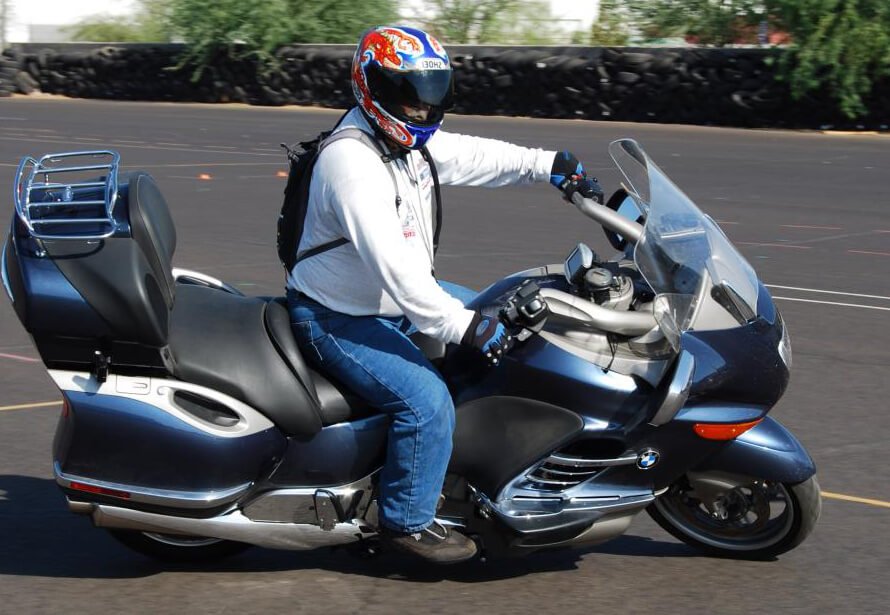
Ride a bigger motorcycle than you can handle
Stepping up in engine size or weight without enough experience can quickly overwhelm your skills. A heavy cruiser, large adventure bike, or high‐powered sportbike has more mass to control at low speeds. If you don’t yet have the muscle strength or finesse to balance the extra weight, you may find yourself fighting the bars—or putting the bike on the ground to avoid dropping motorcycles on your foot.
2. Riding Extremely Slowly
Ironically, most drops happen at very slow speeds. At walking pace or below, a motorcycle’s gyroscopic stability is minimal. You need precise clutch, throttle, and balance inputs to keep moving forward without toppling over. When a rider hesitates, snatches the clutch, or misjudges the throttle at such low speeds, it can mean an instant drop.
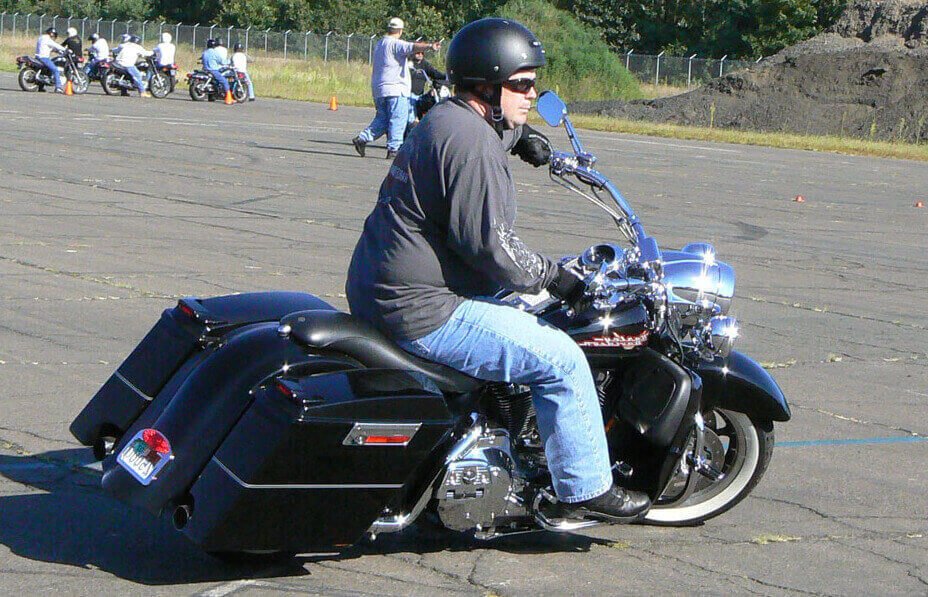
Ride a motorcycle extremely slowly
3. Stopping with the Handlebars Turned
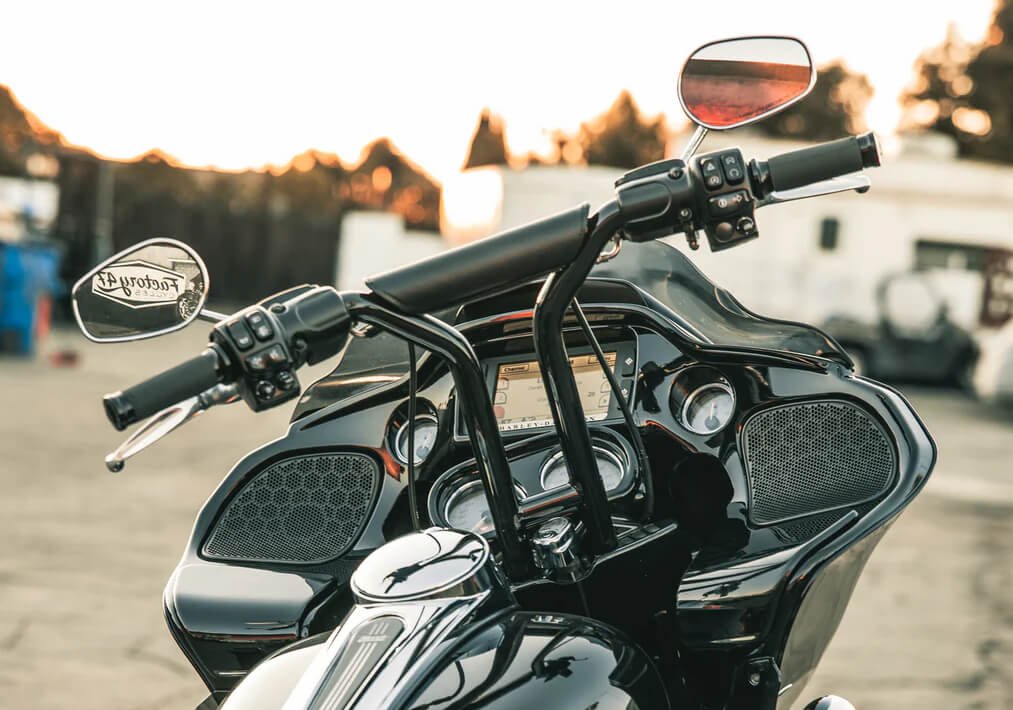
Stopping with the handlebars turned
Whenever the front wheel is turned off‐center, the bike’s lean angle changes, and the forks are no longer aligned with gravity. If you try to come to a complete stop with the bars turned, even a tiny lean will pull the bike down. Many riders forget to straighten the handlebars before killing the clutch or braking fully.
4. Forgetting to Put the Sidestand Down

Always remember to put the sidestand down
It sounds obvious, but many drops happen in the parking lot. You roll to a stop, twist off the throttle, and—without thinking—try to hop off to shut the engine off. Then the bike tips over because the sidestand never went down. This kind of drop is embarrassing and can easily damage mirrors, levers, or body plastics.
5. Stopping on a Sloped or Slippery Surface
A level, hard surface is ideal for both stopping and parking. But in real life, you often have to pull over on gravel, oil, steep inclines, or soft soil. Those surfaces reduce tire traction and make it hard for the sidestand to bear weight. Even if you do everything else right, an unstable surface can let the bike slide or fold under its own weight.
5 Practical Tips to Avoid Dropping Motorcycles
Knowing why drops happen is half the battle. Now let’s cover five simple tips—built around fundamental riding skills—that will greatly reduce your chances of laying your bike down. Memorize these and practice them regularly.
1. Always Keep the Handlebars Straight
Why it matters
When you come to a stop, ensure that the front wheel is pointed straight ahead. This aligns the forks with the forks’ steering head bearings and gives you the maximum lean‐angle margin before the bike falls over.
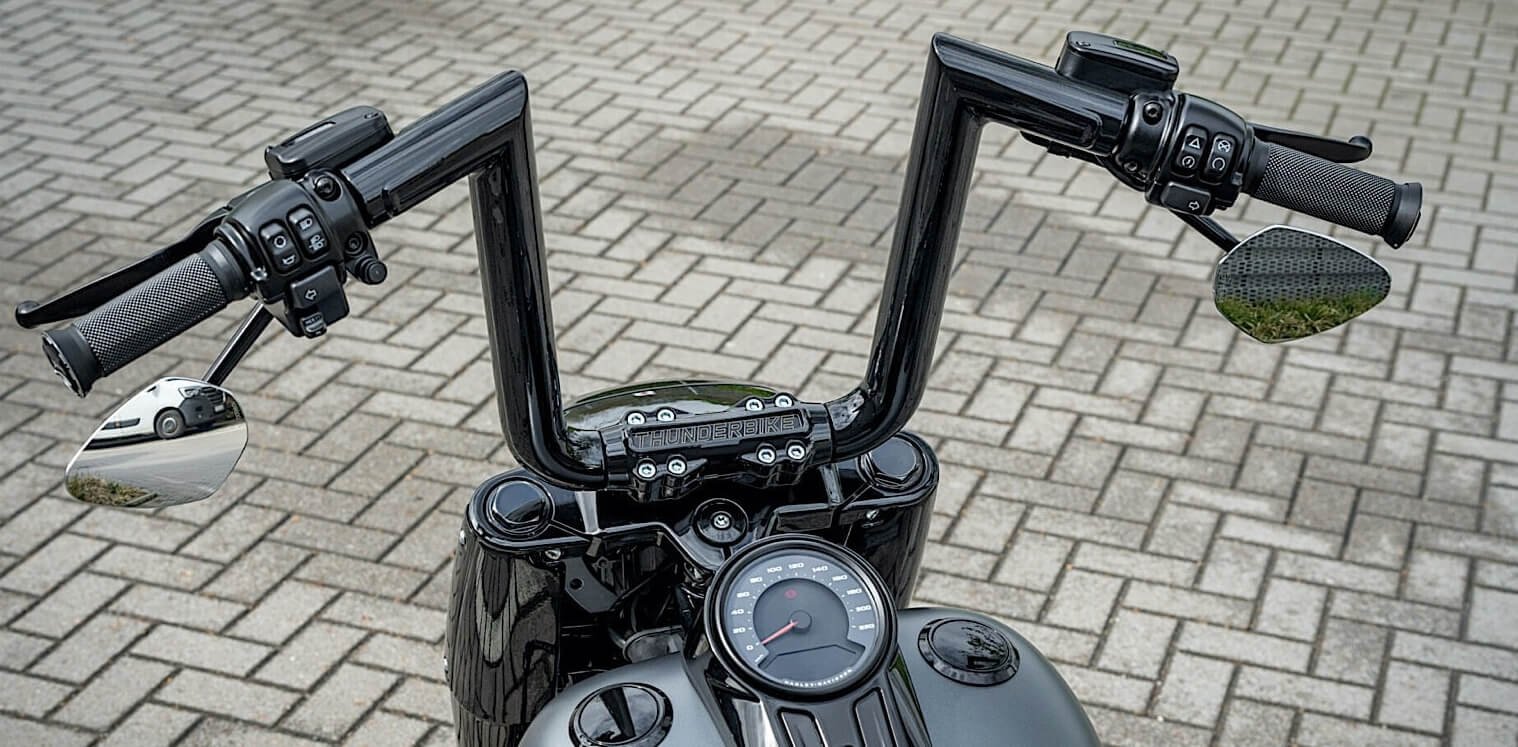
Always keep the handlebars straight
How to practice
- As you slow down for a stop, gently roll off the throttle and pull in the clutch while steering the bars back to center.
- Use your peripheral vision or look down briefly to confirm the wheel is straight.
- When you’re fully stopped, clamp the clutch lever in and use both brakes to hold the bike upright if needed.
Once you build the habit of straightening the bars, you’ll avoid dozens of tip‐overs at stoplights and driveways.
2. Rely on the Rear Brake Only at Very Low Speeds

Rely on the rear brake only at very low speeds
Why it matters
The front brake is powerful. At low speeds, a slight grab at the front lever can abruptly upset the chassis and pull the front end down. The rear brake provides more predictable, gradual slowing without pitching the bike forward.
How to practice
- When you drop to crawl speed (under 5 mph), shift your right foot to cover the rear brake pedal instead of squeezing the front lever.
- Gently press the rear brake to control your speed. Keep your right hand relaxed on the throttle grip.
- If you need to stop entirely, cover both controls—but let the rear brake do the majority of the work.
With rear‐brake practice, you’ll feel more confident moving in tight spaces at a crawl without the fear of grabbing too much front brake.
3. Feather the Friction Zone
Why it matters
The friction zone is the bit of clutch engagement between fully in and fully out. It lets you modulate power delivery at low speeds. Mastering this zone helps you prevent engine stalls and unnatural jerks, both of which can cause a loss of balance.
How to practice
- In first gear, slowly lift the clutch lever until you feel the bike start to pull forward. That spot is your friction zone.
- Ride in a small circle or slalom pattern while balancing in the friction zone, using the throttle to maintain smooth speed.
- Practice coming to a stop from 5–7 mph, using only clutch work (no brakes) to control speed entirely in the friction zone.
Feathering the friction zone builds soft control over engine torque. This skill will give you smooth starts, stops, and slow‐speed maneuvers without dropping motorcycles.
4. Use “Head‐Knight” Sight Placement
Why it matters
Where you look influences where you steer, if you stare at your front wheel or the obstacle in front of you, your bike will naturally drift toward it. By contrast, placing your head and eyes like a knight on a chessboard, looking in the direction you want to go, helps you guide the bike smoothly through tight spots.
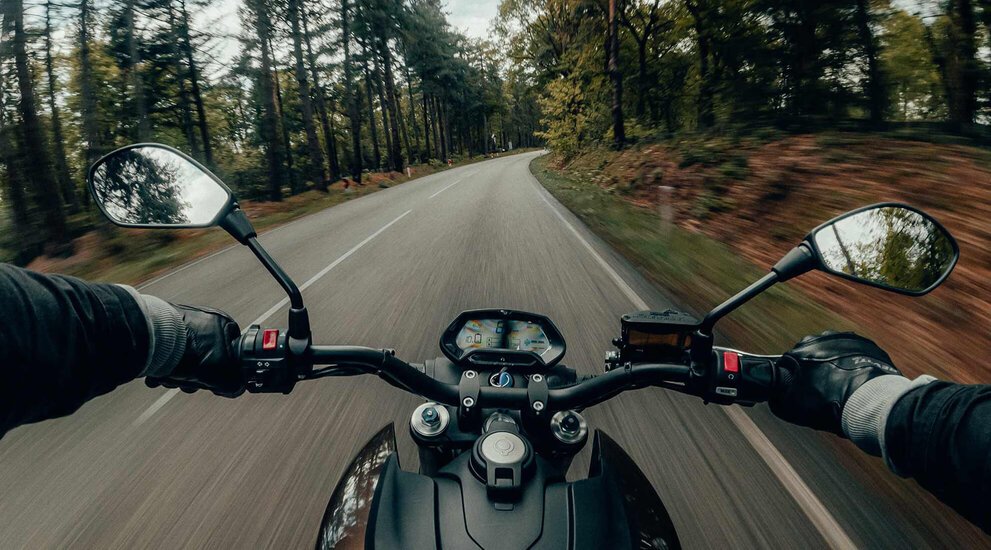
When riding, always look straight ahead and scan the road ahead of you.
How to practice
- Pick a point about 15–20 feet ahead on your intended line. Keep your head and eyes fixed on it while you ride slowly toward it.
- In a parking lot or quiet street, set up cones or markers in a curved path. Slowly weave through, always looking at the next cone, not the cone you’ll soon pass.
- Maintain a relaxed grip and let your sight lead your handlebars. Your body and bike will follow your line of vision.
This “look where you want to go” principle is fundamental to safe riding. It prevents you from steering into hazards and helps keep the bike balanced at low speeds.
5. Approach the “Ground Gate” When Parking
Why it matters
“Ground gate” is the point at which you know the bike is safely supported by its sidestand. Approaching this point deliberately prevents surprise drops when you go to set the bike down.
How to practice
- As you roll into your parking spot, slow the bike to a very low speed using the rear brake only.
- Keep the handlebars straight and your eyes on your sidestand deployment area.
- When you feel the bike’s forward momentum is nearly stopped, click your sidestand down and shift your weight off the seat so you add support.
- Gently rock the bike so you feel it settle on the sidestand before letting the clutch fully out or killing the engine.
Thinking of parking as passing through a “ground gate” turns what often feels like a rushed maneuver into a controlled sequence. You’ll get a tactile sense for when the bike is ready to rest on its sidestand.
Bringing It All Together
Putting these tips into regular practice will build your confidence and muscle memory. Here’s how you might structure a typical slow‐speed skill session:
- Warm up by riding in first gear at a crawl, practicing smooth starts and stops using the friction zone.
- Cone drills: Set up a line of cones 10–15 feet apart. Ride straight between them at a steady crawl, using only the rear brake and friction zone. Keep your sight on the next cone and keep the bars centered.

cone drills
- Bar‐turn stops: Accelerate briefly, turn the handlebars a few degrees to simulate a driveway entry, then come to a stop. Practice straightening the bars before the final slow roll stops.
- Sidestand drills: In an empty lot, repeatedly roll to a stop, click the sidestand down, and let the bike settle. Hone the timing so you never forget to deploy it.
- Surface variation: If safe, practice on different surfaces—concrete, asphalt, gravel—to feel how the bike reacts. Always prioritize level ground for parking.
Conclusion
Dropping motorcycles is an experience no rider wants to repeat. By understanding the five main reasons bikes get dropped and applying the five essential tips, you can dramatically reduce your risk of tip‑overs.
Spend time practicing these skills in a safe, controlled area until they become second nature. With patience and persistence, you’ll gain the confidence to handle your bike smoothly in any situation, keeping both you and your machine upright and ready for the road ahead.

Rodney L is a technical writer and product consultant with over a decade of experience in the motor industry. Rodney is a fan of performance machines that run fast and loud and an expert in all things custom. His numerous articles and write-ups are available at our knowledge base. Whether it’s something wrong with your motorcycle or you are building a custom bike, you can trust Rodney’s experience.
Motorcycle riding is all about the sense of freedom, adventure, and thrill of the open road. But come on—being connected when you ride isn't always an easy thing. Whether you're riding with a buddy, navigating traffic in the city, or long-distance riding, effective communication is crucial. That's where the Fodsports T5 and T6 come in, […]
If you're looking for a new motorcycle intercom system this year, Fodsports has something exciting in store. The company has launched two new Bluetooth helmet intercoms: T1 and T1 Pro. Both models bring upgraded features, sleek design, and high-definition audio quality for riders who want to stay connected, entertained, and safe on the road. But […]
Fodsports T1 and T1 Pro: The Newest Bluetooth Intercoms for Riders. Whether you’re cruising on highways, exploring rugged trails, or commuting daily, clear communication is key. Fodsports is thrilled to launch its latest Bluetooth intercoms: the T1 and T1 Pro. Built for riders who demand reliability, versatility, and crystal-clear sound, these devices redefine how you […]
Many riders who aren't so tall or ladies just starting to ride bikes need to pick out the best Motorcycles for Short Riders and Women. They gotta look for three key things: a seat that's not too high up, a bike that's not too heavy, and something that looks good enough to give them confidence. […]
Fodsports FX 60C vs FX30C Pro: What's new techs are the FX 60C bringing to us? Fodsports is a brand worth-mention for helmet communication and video recording. This brand has established itself as a key player with its innovative Bluetooth camera intercom systems. Recently, Fodsports has released a new camera intercom, the FX 60C. How […]
